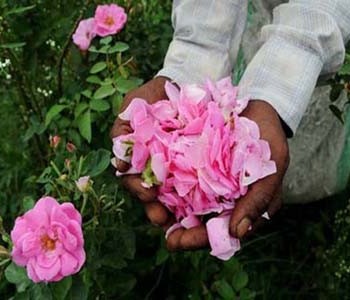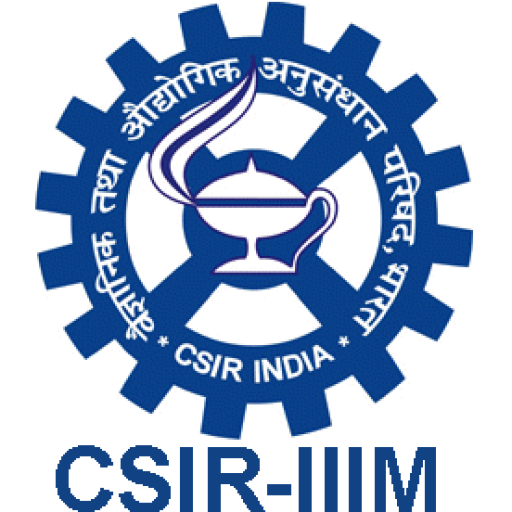About Mission
Medicinal plants have played a key role in human health since time immemorial. Plants and their parts have been in use since ancient times as medicines for the treatment of a range of diseases. In spite of the great advances observed in modern medicine in recent decades, plants still make an important contribution to global healthcare. As per World Health Organization (WHO), because of poverty and lack of access to modern medicine, about 65-80% of the world’s population living in developing countries depends essentially on plants for primary healthcare. The global herbal trade of medicinal plants has been growing exponentially. With an annual growth rate of 15% it is likely to touch a scale of five trillion US$ by 2050. The global interest in the Indian medicinal plants is evident from the inclusion of more than 100 Indian medicinal plants in the recent editions of US, European and British Pharmacopoeias.
Keeping in view the global demand of plant based drugs and inherent strength of participating CSIR laboratories in the cultivation and utilization of medicinal plants and phytopharmaceutical drug discovery and development, CSIR-Phytopharmaceutical Mission has been proposed to bring transformative change in the medicinal plant sector through desired interventions in the areas of agriculture, processing and drug discovery and development for fuelling the growth of phytopharmaceutical industry and rural employment. This mission aims to improve the availability (through captive cultivation) of such medicinal plants which are in high demand by global and domestic phytopharmaceutical drug industry involved in the preparation of medicines of Indian traditional systems.It will also help in the conservation of endangered and threatened medicinal plants and discovery of new botanical drugs for unmet medical needs.
All the activities proposed under sixverticals (A-F) ofPhytopharmaceutical Mission ultimately cater to different facets of phytopharmaceutical/ botanical drug development. The mission will promote the cultivation and conservation of medicinal plants. The activities of the Mission will improve availability of quality botanical raw material on sustainable basis for a boom in the phytopharmaceutical industry. The medicinal plants shortlisted under this mission are in high demand by global and domestic industry involved in the manufacture of medicines of Indian traditional systems. This will also prevent exhaustion of medicinal plant wealth from their native locations by identifying the elite germplasm and conserving it by captive cultivation and in genebanks of CSIR institutes and in the farmers’ fields. Elite strains will be identified and their agrotechnologies will be developed to increase productivity and profitability per unit land area, and to make use of such areas which are affected by abiotic stresses such as drought, salinity, flood, shade etc. Through this mission, it is expected to enable Indian farmers and phytopharmaceutical industry to become global leaders in the production and export of some quality botanical drugs for unmet medical needs.
Since under this mission, end-to-end technology for Pharmaceutical product development & commercialization is envisaged, therefore a large number of human resource from diverse field are required over a period of three years. Starting with production of quality botanical raw material under captive cultivation, the technology package will include, lab-scale technology for phyto-pharmaceuticals, establishing efficacy in animal models, to conducts pre-clinical studies as per DCG(I) / AYUSH regulatory guidelines to establish the safety profile and Phase I Clinical Trials in collaboration with Clinical Trial Centres. Since, the project activity involves large number of human resource; it is presumed that at the end of the project, the human resource associated with the project will become a highly trained manpower to undertake similar kind of projects independently or by joining the Industry sector involved in the phytopharmaceutical drug development. Project activity is also expected to generate new knowledge and intellectual space.
Context/Background: This section should provide a brief description of the sector/sub-sector as well as the national strategy and policy framework. This section should also provide a general description of the scheme/project being posed for appraisal.
The use of plants as medicine is older than recorded history. According to the World Health Organization, 80% of the world population uses herbal medicine for primary health care. The plant kingdom has remained as an inexhaustible reservoir of traditional medicines and also a starting point for modern medicines.
India is known for its traditional medicinal systems—Ayurveda, Siddha, and Unani. These systems are mentioned in the ancient Vedas and other scriptures. Herbal medicine has remained as an important alternative to modern allopathic medicine globally. Since ancient times a number of Indian medicinal plants have been used globally.
Along with the significant increase of worldwide consumption, the safety of herbal medicine has been highlighted in the recent past. The US-FDA has estimated that over 50,000 adverse events are caused by plant based medicines. For most herbal drugs, the efficacy is not proved and the quality is not assured. The WHO Traditional Medicine strategy 2014–2023 focuses on promoting the safety, efficacy, and quality by expanding the knowledge base and providing guidance on regulatory and quality assurance standards.
Taking a clue of the global trends and opportunities in plant based medicines, Government of India, has recently amended the Drugs and Cosmetics Act, 1940& Rules 1945to include Phytopharmaceutical drugs as a new category.This gazette notification defines regulatory provisions for phytopharmaceuticals and regulatory submission requirements for scientific data on quality, safety, and efficacy to evaluate and permit marketing for an herbal drug on similar lines to synthetic, chemical moieties.
Under new guidelines, Phytopharmaceutical drug is defined as purified and standardized fraction with defined minimum four bio-active or phytochemical compounds (qualitatively and quantitatively assessed) of an extract of a medicinal plant or its part, for internal or external use of human beings or animals for diagnosis, treatment, mitigation, or prevention of any disease or disorder but does not include administration by parenteral route. In Schedule Y, the newly added Appendix I B describes data to be submitted along with the application to conduct clinical trial for import or manufacture of a phytopharmaceutical drug in the country.
The new phytopharmaceuticals regulation permits the development of the drug development using advanced techniques of solvent extraction, fractionation, potentiating steps, modern formulation development, etc. and the regulation for this category of drugs are at par with regulations in USA, China, and other countries involving scientific evaluation and data generation.
This new regulation has given a new hope for innovations and development of new drugs from botanicals in a scientific way and would help in the global acceptance of the use of herbal products by modern medical profession.
In recent years, due to the renewed interest in herbal products globally, several Pharmacopoeias like the British Herbal Pharmacopoeia, the Japanese Herbal Pharmacopoeia, the US herbal pharmacopoeia, the German Commission E, the Pharmacopoeia of the Peoples’ Republic of China and many others have come into existence. All these pharmacopoeias emphasize maintenance of quality in their respective countries. Hence, the need of the time is to subject Indian medicinal herbs to rigorous modern scientific testing, and develop standards so as to maintain quality for global competitiveness.
Despite serious efforts by various local progressive farmers, foresters and various state authorities, most of the important plant species are threatened, endangered or critically endangered. Therefore, there is an urgent need to implement collaborative R&D efforts towards breeding, extension, pharmaceutical and biotechnological approaches for sustainable utilization and conservation of targeted plant species.
For the globally accepted botanical products, standardization and quality control of raw material and the herbal preparations is very important. In the cases where the active principles are unknown, marker substance(s) need to be established for analytical purposes. However, in most cases these markers have not been tested to see whether they really account for the therapeutic action reported for the herbal drugs. Apart from these variable factors, method of extraction, and contamination with microorganisms, heavy metals, pesticides etc. can also interfere with the quality, safety and efficacy of herbal drugs. For these reasons, pharmaceutical companies have to use cultivated plants instead of the plants harvested from the wild, because cultivated plants show smaller variations in their phyto-constituents. Furthermore, when medicinal plants are produced by cultivation, the main secondary metabolites can be monitored which facilitates in defining the best period for harvesting.
The Council of Scientific and Industrial Research (CSIR) has inherent strength in phytopharmaceutical drug discovery. Therefore, CSIR Phytopharmaceutical Mission has been conceptualized for the purpose and is being made operational.
The nodal laboratory is CSIR-Indian Institute of Integrative Medicine (IIIM), Jammu. The participating laboratories areCSIR-Central Institute of Medicinal and Aromatic Plants (CIMAP), Lucknow; CSIR-Central Drug Research Institute (CDRI), Lucknow;CSIR-Institute of Himalayan Bioresource Technology (IHBT), Palampur; CSIR-Indian Institute of Chemical Biology (IICB), Kolkata; CSIR-National Botanical Research Institute (NBRI), Lucknow; CSIR-North-East Institute of Science and Technology (NEIST), Jorhat and Unit for Research and Development of Information Products (URDIP), Pune.
The CSIR Phytopharmaceutical Mission is envisaged to bring transformative change in the medicinal plant sector through desired interventions in the areas of agriculture, processing and drug discovery and development for fuelling the growth of phytopharmaceutical industry and rural employment. This mission aims to improve the availability (through captive cultivation) of such medicinal plants which are in high demand by global and domestic industry involved in the preparation of medicines of Indian traditional systems.
The Mission aims to improve the availability (through cultivation) of such medicinal plants which are in high demand by global and domestic industry involved in the preparation of medicines of Indian traditional systems. Under this mission we propose to prevent exhaustion of medicinal plants from their native locations by identifying the elite germplasm and conserving it by cultivation and in gene banks. Improved varieties along with their agrotechnologies will be developed to increase productivity and profitability per unit land area, and to make use of such areas which are affected by abiotic stresses such as drought, salinity, flood, shade etc. In addition, chemical processes will be developed for the preparation of standardized extracts and enriched fractions of selected medicinal plants to transfer the value-addition technologies to the entrepreneurs to promote use and export of value-added material instead of the raw plant material. A serious effort would be made to translate the potential clinical leads in different CSIR laboratories to develop them into phytopharmaceutical drugs both through AYUSH and DCG(I) regulatory route for both domestic and global markets.
This mission will also play a dominant role in the production of Phytopharmaceuticalproducts for domestic & global markets. In this programme, CSIR with its dedicated laboratories working in the area of medicinal plants will synergise with other public- and private enterprises to pursue deployment of already or nearly developed technologies for the benefit of all the stakeholders.
The mission aims to develop and disseminate the phytopharmaceutical related S&T developments to reach the end users/clients of CSIR -the farmers, the industry and the society, leading to business opportunities, quality of life improvement and wealth & jobs creation. All this will be implemented without causing harm to the environment to position India as a hub of opportunities in the domain of the Mission.
 Screen Reader Access
Screen Reader Access

